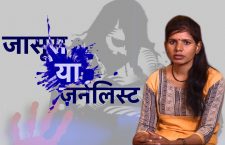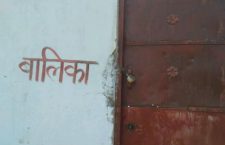Development has always been an elusive concept as far as our tribal communities are concerned. A report echoing issues faced by the forest dwellers of rural Uttar Pradesh
“600 adivasis came to the dharna,” said Chetkumar, the head of the adivasis who had congregated on the ghats of the Varanasi in a peaceful protest, “They’re aggrieved because they’re never gotten anything from the government to date.” Chetkumar spoke from Shastri Ghat in Varanasi, where he’s holding a dharna along with the tribals he represents, armed with a six-point list of demands for the government to help realize their rights as citizens.
The huge gathering of tribals was from across the districts of Uttar Pradesh, from rural and forest areas, and the choice of Varanasi, as Prime Minister Modi’s constituency, was a deliberate one.
While Uttar Pradesh has the lowest proportion of individuals in its population that fall under the Scheduled Tribes–only 0.57% of the most populous state in the country–by most indicators, this miniscule section of society is disproportionately suffering. They have literacy rates lower than the country’s average of STs. There were only 51 PHCs in the tribal areas in UP, as of 2017, expected to cater to a population of 1031076 people. Only 52.46% of all ST households in UP are in livable conditions, as defined by the 2011 Census; 6.92% fall in the extreme category of dilapidated. Only 43% of these homes have a source of drinking water within their premises. 64.5% don’t have latrines within the premises.
“We don’t have water tanks for our homes, we have no resources really,” said Jigna, an adivasi woman present at the dharna. “I have small children. We have no means to live. Where do we stay? Do we as adivasis not have a right to live? We have rights, dowe not?”
Indeed, with the approach of Republic Day, it would be mindful to hark back to the Indian Constitution here, which recognizes the need to protect tribal interests, especially tribal autonomy and their rights over land, through the Fifth and Sixth Schedules. In India, most of the tribes are collectively identified as “Scheduled Tribes” and their right to self-determination is guaranteed by Part X: The Scheduled and Tribal Areas – Article 244: Administration of Scheduled Areas and Tribal Areas. Tribals in India are also protected under the PESA Act (1996) to enable tribal self-rule.
There was also the monumental Forest Rights Act (2006), which gave the tribal and other forest-dwelling population the individual or collective right over forest land for habitation, cultivation or livelihood given the inextricable historic relationship between tribes and the forests, and the colonial denial of that relationship.
Despite these legal provisions, as well as eligibility to most welfare schemes along with schemes formed specifically for tribal communities, the ground reality clearly highlights that there is much left to be desired in their execution. “We want a ration card, housing, ownership of land—land on which five generations have grown up, but they’re refusing to let us make a house on it,” said Sugaga, another dharna attendee. Even with the FRA, matters of land ownership for adivasi communities is far from black and white. In UP, till 2018, 93,644 claims were received by the FRA; in turn, only 18,555 individual titles have been distributed. 74,945 claims–a bulk of the total– were rejected. And UP has realized 0% of the 1,913,577 acres of potential Community Forest Rights land.
“Many politicians and officials have promised us that they’d get things done for us, but till date that has never happened,” said Sugaga, pointing to the failure of bureaucracy as a possible reason why so many adivasis seem to fall through the cracks of the system. She illustrated her own experience: “We went to the CDO with a charter of demands and he just dismissed us, asking if we had nothing better to do! If we had what we needed, would we be doing this?”
Jigna echoed her dissatisfaction with the government, “I have no faith in any official.” Chetkumar was direct and to the point in what the purpose of this dharna was: “The main reason why we have gathered here today is to make sure that our demands reach the Prime Minister.” And with the 2019 elections right around the corner and the BJP having taken a significant hit in some major state assembly elections in 2018, it would be wise to heed Chetkumar’s honesty when he said, “One thing is clear. We will now only elect someone who listens to us.”
And at least superficially that is BJP’s Varanasi head Azad Vishvakarma claimed he did, “We certainly hear their demands and feel their pain. If something is lacking in their lives, we will do it now.” But when asked immediately after if he had read the charter of demands, he replied in a placating manner, “Yes, yes, I’ll read it. Later.”
This Khabar Lahariya article first appeared on Firstpost.

